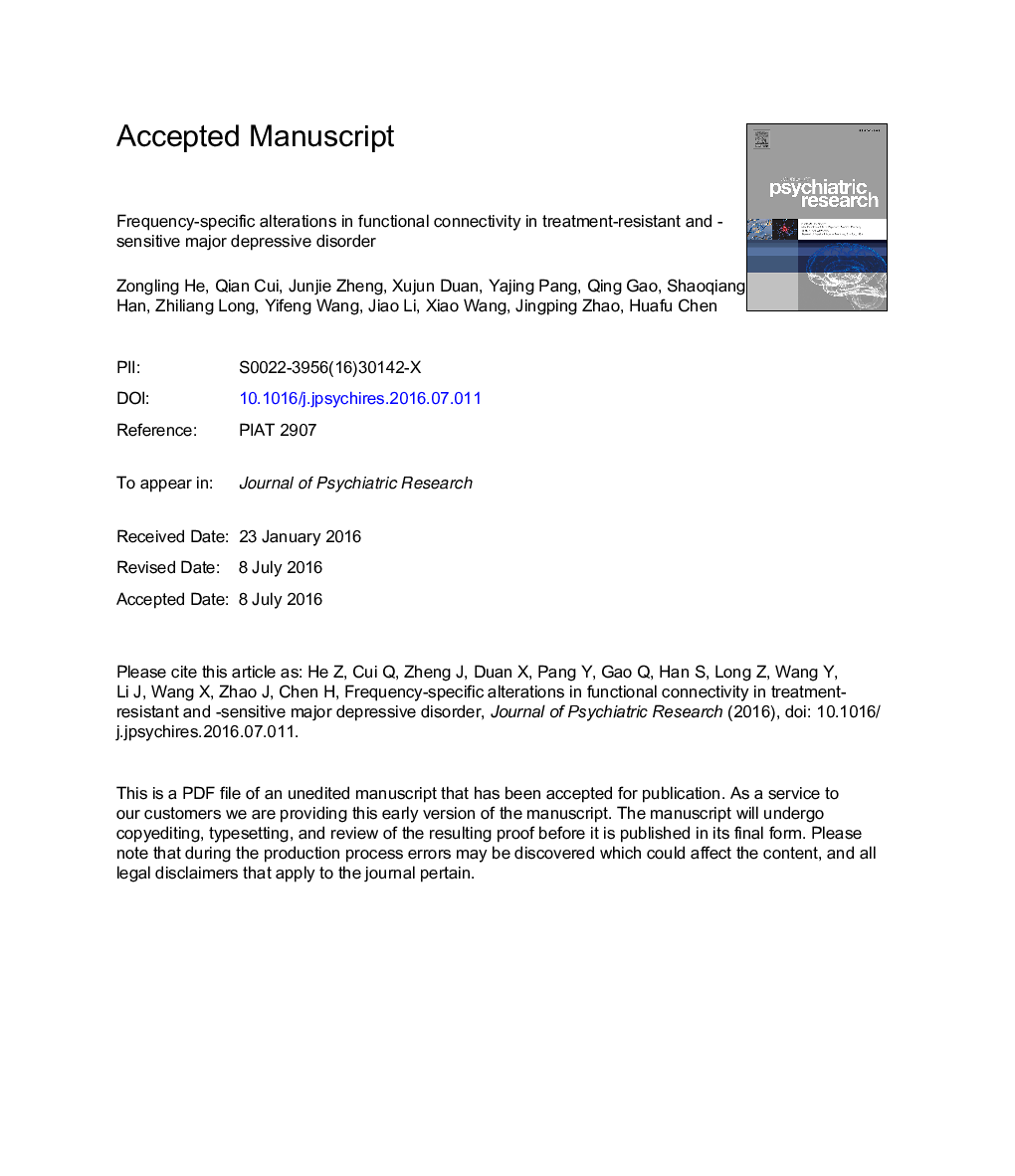| Article ID | Journal | Published Year | Pages | File Type |
|---|---|---|---|---|
| 6799909 | Journal of Psychiatric Research | 2016 | 27 Pages |
Abstract
Major depressive disorder (MDD) may involve alterations in brain functional connectivity in multiple neural circuits and present large-scale network dysfunction. Patients with treatment-resistant depression (TRD) and treatment-sensitive depression (TSD) show different responses to antidepressants and aberrant brain functions. This study aims to investigate functional connectivity patterns of TRD and TSD at the whole brain resting state. Seventeen patients with TRD, 17 patients with TSD, and 17 healthy controls matched with age, gender, and years of education were recruited in this study. The brain was divided using an automated anatomical labeling atlas into 90 regions of interest, which were used to construct the entire brain functional networks. An analysis method called network-based statistic was used to explore the dysconnected subnetworks of TRD and TSD at different frequency bands. At resting state, TSD and TRD present characteristic patterns of network dysfunction at special frequency bands. The dysconnected subnetwork of TSD mainly lies in the fronto-parietal top-down control network. Moreover, the abnormal neural circuits of TRD are extensive and complex. These circuits not only depend on the abnormal affective network but also involve other networks, including salience network, auditory network, visual network, and language processing cortex. Our findings reflect that the pathological mechanism of TSD may refer to impairment in cognitive control, whereas TRD mainly triggers the dysfunction of emotion processing and affective cognition. This study reveals that differences in brain functional connectivity at resting state reflect distinct pathophysiological mechanisms in TSD and TRD. These findings may be helpful in differentiating two types of MDD and predicting treatment responses.
Keywords
Related Topics
Life Sciences
Neuroscience
Biological Psychiatry
Authors
Zongling He, Qian Cui, Junjie Zheng, Xujun Duan, Yajing Pang, Qing Gao, Shaoqiang Han, Zhiliang Long, Yifeng Wang, Jiao Li, Xiao Wang, Jingping Zhao, Huafu Chen,
